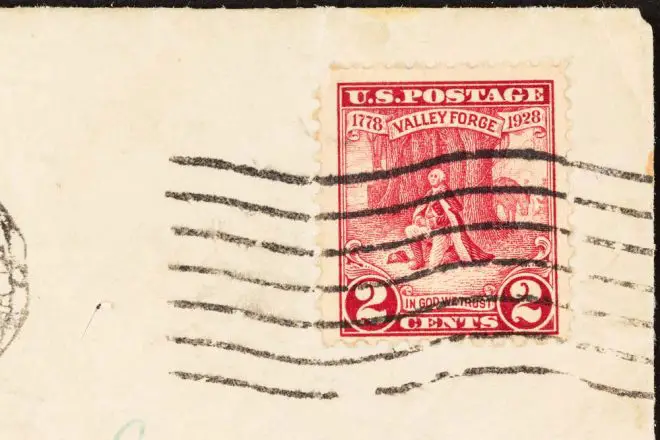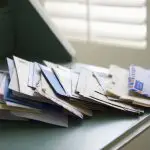
As a stamp collector, one of the main perks of the hobby/industry is that stamps are everywhere! It’s crazy to think about how much mail we receive throughout the year (for better or worse) directly to our door. Regardless of if you are a seasoned collector or just a beginner, it’s always good to know how to remove a used stamp from an envelope properly.
Contents
Getting Started
It’s important to note that it’s never wise to simply tear the stamp off (as this can damage the stamp). Depending on the situation, it’s also worthwhile to take a moment to decide if it’s even worth it to remove the stamp, or perhaps just leave it on the envelope for value purposes. If you do choose to remove it, start by using scissors to cut around the stamp. Leave a quarter of an inch of the envelope on all sides of the stamp.
What’s Next After Trimming the Paper?
To remove the stamp from the envelope, you will need to soak it in warm water. If you are removing self-adhesive stamps, the same technique can be used, but the process may take a little longer. If the envelope is brightly colored (like the red and green ones we typically see during the holidays), you may not want to remove the stamp as the dye will likely bleed into the water and end up discoloring the stamp.
Sort Before You Soak
Before you soak any stamps, it is best to sort them similar to how you would sort a pile of laundry. Put similar colors together, separating light colors from the dark. Be sure to take out any stamps with holographic designs on them, in particular, because these can flake and peel off.
Keeping Watch & Using Clean Water
You should always keep a close eye on your stamps while they are soaking. If they are left in the water for too long, they could quickly turn to pulp and fall apart. If you feel like you may not have the time to do all the stamps in one sitting, it’s best to wait. Only start the soaking process when you have the time to do it right.
If you’re removing batches of stamps together, be sure to use clean water for each bunch (if you grouped your stamps by color, for example). When a stamp starts floating to the top of the water, remove it, rinse it, and allow it to air dry on a mat or a towel.
If your stamp starts to curl, place it on some blotting paper and cover it with a sheet of plastic. Lay the stamp inside the book and stack other books on top. By the time your stamp is completely dry, it should be very flat with no wrinkles or curling.
Stubborn Stamps
If at any time your stamp will not easily peel from the envelope, leave it in the water and let it continue soaking until it is released. Soaking can also be used to remove stubborn hinges on the back of the stamp.
For more information on stamp care, please check out our other article on How to Care for a Stamp Collection.






